Dazhushan Scenic Area
Dazhushan Scenic Area
Dazhushan Scenic Area is located on the southeast coast of Huangdao District. Its main peak is 486 meters with a total area of 65 square kilometers. It is mainly divided into Shimen Temple Scenic Area and Xiugu Valley Scenic Area of Pearl Mountain. The scenic spot is rich in natural and human landscapes. It has been awarded as Qingdao Forest Park, Shandong Agricultural Tourism Demonstration Site, National Agricultural Tourism Demonstration Site and National AAAA Tourism Scenic Area successively. There are Buddhist statue Grottoes built in the Sui and Tang Dynasties, Shimen Temple built in Jin Dading Period, the hermitage of ancient celebrities such as Tomb pagodas, Mayi Ancient Temple, Zhu Chaodong, Zhushan Stone Room and the traces of literati and ink visitors, the unique thousands of acres of azaleas in the north of the Yangtze River, and the exotic peaks and rocks, the most representative of which is the rare natural Buddha in the country, they are lifelike places. It shows the ingenious workmanship of nature.
Main attractions
There are many historic sites in Dazhushan, including Daxiong Palace of Shimen Temple, Natural Stone Gate, Tomb Tower Forest, Poetry Chanting Platform, Mayi Temple, Zhushan Stone Chamber and three Sui and Tang Grottoes, which have high appreciation and research value. There are more than 50 odd stones in Dazhushan, including monks worshipping Buddha, God tortoise looking at the moon, double dolphins playing pearls, Alpine frog singing, giant crocodile going down the mountain, gecko foraging, fairy bridge, Laojun temple, finger stone, etc. The number of these stones is so large that the Xiao of shape and God is very rare.
Zhushan show Valley
At the eastern foot of the Great Pearl Mountains, there is a valley, known as the Pearl Mountains Xiugu. The Valley is five miles long. The stream flows into the artificial lake under the mountain. Green water and green hills embrace each other, and the green peak is reflected in the green water. Tourists walk around the lake, bringing streams into the valley, like entering the painting scene. Spring comes early in the beautiful valley of Pearl Mountain. Before the Qingming Festival, cherry blossoms, apricot blossoms and peach blossoms were in full bloom at the entrance of the valley. After the Qingming Festival, on the riverside and hillside of the valley, there are clusters of delicate yellow Forsythia flowers and white tangerine pear blossoms in succession. Spring breeze blowing, flowers swaying, golden waves surging in the valley, snow waves undulating. Further down the valley, there is a flower peak standing vertically, and the valley is divided into two valleys. Along the north side of the valley, we can see that on the shady hillside on the South side, the red azaleas blossom from the bottom of the valley to the top of the mountain, even on the cliffs and cliffs, there are flourishing flowers and graceful shadows. Standing at the foot of the hill and looking at the top of the hill, the "waves" empty the sky directly, making people feel that the flowers are the fragrant flowers floating down the sky; standing at the top of the hillside, looking down, the "tide of flowers" rolls, and the valley is filled with fireworks and mists, reminding people that the flowers are the purple light of the deep earth. Along the stone steps between flowers, you are surrounded by flowers, waterfalls, people are wrapped in the whirlpool of flowers. In April, the beautiful valleys of Pearl Mountains are full of flowers and people. Flowers and tourists are merging into a tourist tide. Climbing to the top of the mountain, we can see that there are several valleys in the south where azaleas are also in full bloom. Looking from afar, they look like clouds like clouds.
Shimen Temple
There is an ancient temple in a mountain stream on the north side of Daba top, the main peak of Dazhu Mountains. It is called Shimen Temple because of its two giant stones.
Shimen Temple was built in Jindading five years (1166). At that time, the temple had Daxiong Palace, Tianwang Palace, Bell Tower, Drum Tower, East and West Luzhou and other buildings. There is a clear spring under the giant stone on the right side of Shimen. The water is as green as jade. It is a famous jade spring. Therefore, people also call Shimen Temple as Yuquan Temple. In the mid-1940s, Shimen Temple was destroyed in the war. In 1995, the Jiaonan Municipal People's Government invested in rebuilding the Daxiong Palace and the Tomb Pagoda of Shimen Temple.
The environment of Shimen Temple is very beautiful. The stream in front of the temple is murmuring, and there are bedding elephant stones beside the stream. A little farther away, the number of peaks and pavilions is elegant. On the eastern side of the temple there are "lion peaks". On the west side, there are "Buddha Bodhisattva", "God monkey picking Xiantao" and "pig eight back daughter-in-law". Lifelike and lifelike, the east side of the temple is Dazhushan Reservoir. An ancient temple surrounded by green water is more beautiful. Tourists here rod fishing, fishing in the water swimming, but also fishing in the mountains.
Shimen Jian
Shimen Temple southbound, then into the Shimen River surrounded by peaks. Green pines and green vines in Jianyi, deep and lush; a winding mountain stream?? With high and low stone pools, all the way clear, all the way whispering. In the summer rainy season, there are waterfalls hanging on the cliffs, with flowing water like silvery dazzling, soft across a slope, sliding down the mossy stone wall, falling into the Bitan and splashing silver pearls and jade grains... In ancient times, Shimenjian was a place where literati and Mohists often came to visit and gather. There is a huge stone on the west side of Jianjian, on which is engraved a poem written by Wang Wujing, a scholar of Ming Dynasty: "The cold mountain is deep in the clouds. Someone is here. One cup after another, cook in the light of the Mingxi River." So far the handwriting is clear. He also left a poem of "Nanjian in Shimen": "Looking at the clouds sitting on the rocks at sunset, the fragrance of wild flowers has forgotten to return. Where are the people coming and going? The sound of a spring makes a little green." Gao Fengju of the Qing Dynasty wrote through Shimenjian: "Jia'an Shanhua Hong is immersed in water, and the sunset reflects the fish's silk (zeng). He did not ask the Qin people for food, but the scenery was in Wuling. These poems depict the scenery in Shimen Jianyan at that time. Now the ancient wind and wild interest are still there.
Ma Yi an
From Shimenjian to the hill, across the Aoyu Stone and Scissor Peak, to Mayi Mountain, there are remnants of Mayi Temple. According to the Records of Jiaozhi Renewal in the Republic of China, Chen Zhongju of Jin Dynasty, Zhang Qingyuan of Yuan Dynasty and Zhao Ma Yi of Ming Dynasty had lived in seclusion here. On the cliff behind the nunnery, there is a hanging stone chamber. The door is exquisitely chiseled. The door is two meters high and the top is solitary. There are stone doorframes and stone carved doorsteps. In front of the stone chamber, there are lotus stones carved with lotus flower pictures about 3 meters away. "Jiaozhi" records that there was an ancient iron slab bridge connecting the stone chamber and the lotus stone, and people could climb the lotus stone through the iron slab bridge into the stone chamber. On the eastern side of the stone chamber is inscribed the word "Yunxiao'an". There are also inscriptions of "Yuquan Guanzhiyuan" inscribed by Li Qingdao and others, and the inscription of "Taiqing Rock" inscribed by Sun Rong in the fourth year of Dade in Yuan Dynasty (1301). On the east side of the temple, there are "flying stones" and "Chaoyang Cave" inscribed on the forehead of the stone. In front of the temple, there is "Sayingshi". Under the Sayingshi, there is a stone to grind down, which reveals the human fireworks of the past here. There is a platform on the west side of the nunnery. The stone building has a regular foundation. From here, you can see Lingshan Bay in the East and Longwan in the west. This is the site of Wanghai Building.
Zhu Chao Dong
From the front of Mayi Temple, a winding path to the southeast, to the west slope of Dadangding, not far ahead of a stone paved path, you will see a stone gate, pillow, anmen stone nest and doorsill are all in place, this is Zhu Chaodong. Stepping into the door, inside is a courtyard surrounded by huge rocks shading the sky and the sun. On the eastern side of the hospital, there are many huge stones overlapping each other, buckled into a hole, deep and unfathomable. Visitors will feel deep in the seclusion of Dazhushan when they visit here.
Dazhushan Grottoes
In ancient times, the Great Pearl Mountains had a flourishing period of Buddhism. There are relics such as Shimen Temple, Tomb Tower Forest, Mayi Ancient Place, Gezang Ancient, Chrysanthemum Ancient and Motie Ancient. Legend has it that there are 99 Grottoes in the mountain. Now there are three well-preserved grottoes: Jiagou Nanshan Grottoes, Jiagou Xishan Grottoes and Shiwuzigou Grottoes. The Dazhushan Grottoes have their own characteristics in the remaining Grottoes in Shandong Province, which has attracted the attention of Buddhist academic circles. Many scholars have come to visit and study them with great interest. After the experts'investigation, they believed that the three grottoes were all built in the Sui and Tang Dynasties, and that they belonged to the Northern Qi Dynasty.
Strange rock
There are many strange peaks and rocks in the Great Pearl Mountains. When you cross Dazhushan on National Highway 204, you will see a stone turtle struggling to climb to the top of the mountain on the South hillside. Legend has it that it was a turtle in the Yao Pond of the Queen Mother. She took the opportunity of the Peach Club and slipped along the Tianhe River to the East China Sea and climbed to the Dazhushan Mountains. Looking at the North hillside, you can see a high stone which looks like a girl carrying a basket. There are also "Eagle Stone" on Nanshan Mountain, and "Monk Stone" on Beishan Mountain, dressed in a chariot and carrying a Zen wand.
In the middle of the Great Pearl Mountains, there is a mountain, much like the four Tang monks and apprentices who are walking on the road of taking Buddhist sutras from the west. A mountain to its north is like a horse in the sky. There is also a mountain peak, which is just a vivid ghost-killing Zhongkui. "One point to the sky", "Zhongfeng", "Xianrenqiao" and other peaks are created by nature in order to strive for novelty.
There are many stones in the mountains which seem to be spiritual. The more you look at them, the more you feel that they are still and moving. "Qingzhao Suoju", "Sage asked for the way", "Monk and Taoist game", "Guan Gong asked for battle" and other strange stones, shape and spirit.
tourist guide
It's a good time to visit Dazhushan all the year round.
In spring and April, the Rhododendron blossoms in the Great Pearl Mountains were magnificent, and there was a flood of flowers and crowds in the beautiful valleys of the Pearl Mountains. At this time, only one kind of Rhododendron blossoms in Dazhushan. The local people call it "Blue Jingzi". Its flowers, red with blue halo, are like the color when the fire burns to its purity. By the end of April, this kind of flower had faded, and some people thought that the tide of flowers had ebbed, but in fact it was not. At this time, you can see another species of Rhododendron in Dazhushan, Yingshanhong, blooming one after another as you go up from the Blue Jingzi Flower Area. It is scarlet in color. May Day is in full bloom and lasts for nearly a month. Although it is not as much as Blue Jingzi, but most of the cliffs, flying with a smile, do not have charm. There is another species of Rhododendron on Dazhu Mountain, which is called Kongtong flower by local people. It grows on cliffs and low slopes. It blossoms in red and white. It does not blossom first and then leaves like Blue Jingzi and Yingshanhong, but it blossoms and leaves as soon as it blooms, from the end of May to the middle of June. Then the white wild roses blossomed in the valley, and there was a thousand piles of snow in the green bushes. In June, the northern slope of Zhushan Xiugu Valley also opened a large area of jubilee, as if shaking off the red silk, throwing away the satin, the valley is fragrant and full of colour, shining like neon. The flowers of the Albizia tree bloomed like this until the end of summer. Therefore, in spring and summer, there are always flowers for people to watch in Dazhushan.
Every mountain stream in Dazhushan has water. Water is an important part of Dazhushan's spirit. Not only is the scenery of rapids and waterfalls beautiful in summer, but also the water in Dazhushan is full of poetic and picturesque in spring, autumn and winter. When spring flowers clip the bank, the water of every mountain stream is beautiful and cheerful; when autumn quietly enters the mountain, the reservoir in the mountain and the blue pond in the Qingxi River float in the sky, the fish swim between the peaks and clouds, and the clear water of the Great Pearl Mountain shines brightly and beautifully on the mountain; in the middle of winter, a mountain stream is a jadeite ice belt, and the river sings shallowly under the ice of the carved flowers, which makes people think of it. It's the spring news of Dazhushan.
Dazhushan is known as "a famous coastal mountain" because of its clouds, mists and strange peaks and rocks. Peaks depend on clouds and they depend on each other. In what season, there will be clouds in the Great Pearl Mountains. Those strange peaks and rocks in what kind of clouds and mists show what kind of charm. For example, the peak resembling the Tang monks and apprentices, if it is standing in the rolling clouds in summer, is like four Tang monks and apprentices driving back to the East after completing the great business of taking sutras; if it is autumn, there is only a slight air drifting between the mountains, the four Tang monks and apprentices are standing on the top of the hill and looking at the path. If the stone turtle on the hillside is in the vast sea of clouds, it seems to have just swam from the East China Sea to the shore; if a wisp of clouds hangs around the hillside, it is a kind of struggle to climb the mountain. The ever-changing clouds and mists, as well as the strange peaks and rocks, constitute the eternal novelty of the scenery of the Dazhushan Mountains. So, throughout the year, no matter when you visit Dazhushan, you will enjoy the new scenery of Dazhushan.
Dazhushan Traditional Mountain Club
Since the Shimen Temple, there have been mountain meetings in Dazhushan. Every year on the eighth day of April in the lunar calendar, people go to the Shimen Temple to have a mountain meeting: some come to Jinxiang to pray for blessings, some come to visit, and some do small business. At this time, the incense and popularity of the Shimen Temple are booming, and the Great Pearl Mountain is very busy! Every year, on the eighth day of April in the lunar calendar, the people's government of Jiaonan City holds a mountain meeting ceremony here, arranges literary and artistic performances, organizes business transactions and propaganda, etc. This is the turn of spring and summer. People come here for sightseeing, watching literary and artistic programs and consulting on economic and trade information, which leads to the climax of Dazhushan tourism.
Tourism information
Travel Tips
1. Tourist guides can be provided in scenic spots with a guided fee of 30 yuan.
2. Two characteristic tour guides, one in English and one in Japanese: the price is 100 yuan.
Practical information
Admission ticket
40 yuan per person in peak season (March 16-October 15), 20 yuan per person in off season (October 16-March 15 next year), 60-70-year-old people with valid certificates, 1.2-1.4 meters children half price, 70-year-old people with valid certificates and children under 1.2 meters free;
A sightseeing bus costs 10 yuan per person
Opening Hours
8:00-17:00
Traffic guide
1. When individual passengers arrive at the West Coast Bus Station by bus, they transfer to No. 3 Bus to Shimensi Scenic Spot, and transfer to No. 12 Bus to Xiugu Scenic Spot of Pearl Mountain by ferry from Xuejiadao or Huangdao Wharf.
2. Self-driving tourists take ferry to Huangdao or Anzi wharf and follow the traffic instructions of Dazhushan scenic spot along Binhai Avenue. They Park in the temporary parking lot of Binhai Avenue or fire-proof passage. Then they can take the bus of Huafang special line to the scenic spot of Xiugu or Shimen Temple in Zhushan.
3. The Dazhushan Pedestrian Road Project has been built in the scenic spot, including the whole-line tour pedestrian road from Shimen Temple to Xiugu of Zhushan and the Huahuan Pedestrian Road of Xiugu of Zhushan, which has solved the problem of tourists'difficulty in traveling.
4. During the flower festival, 12 battery cars will be purchased to transport tourists in the scenic area, so as to solve the problem of too long walking distance for tourists to enjoy flowers.
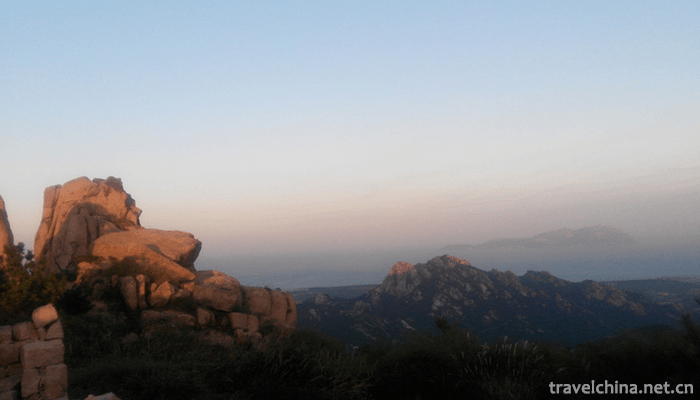
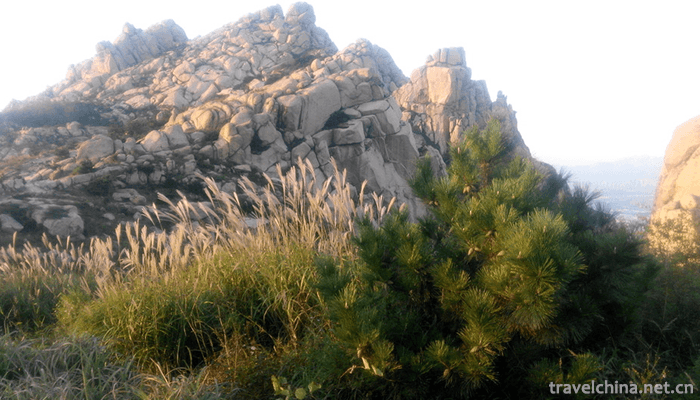
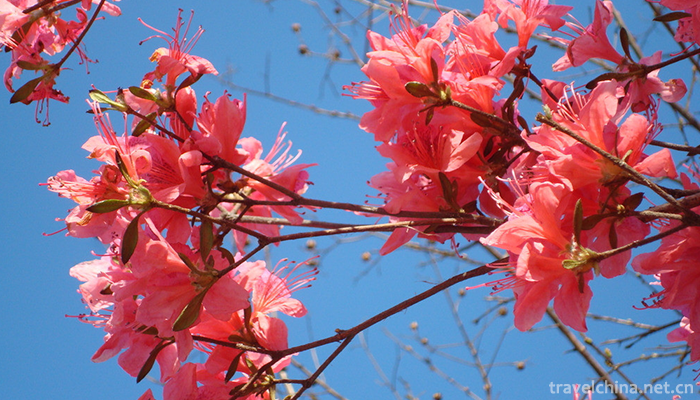
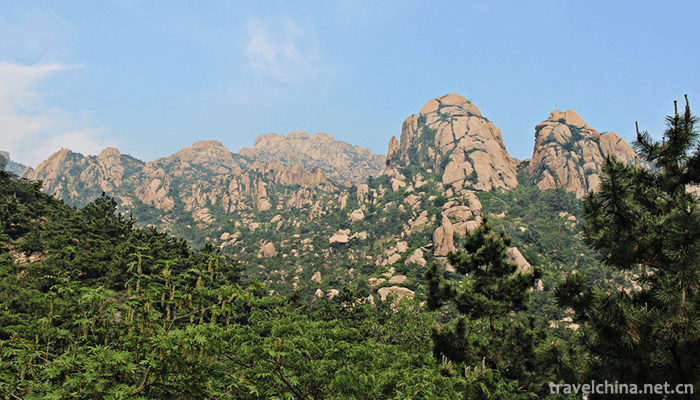
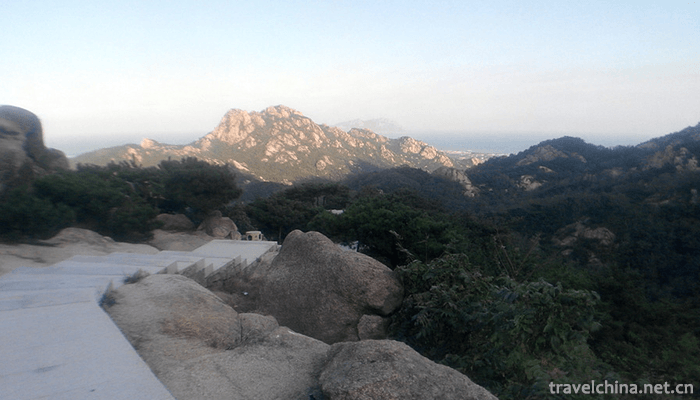
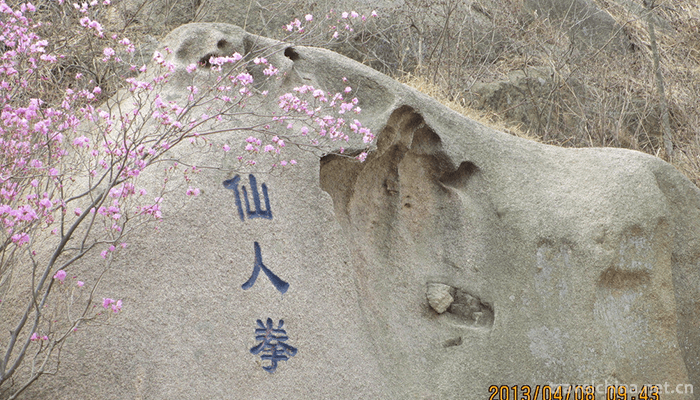

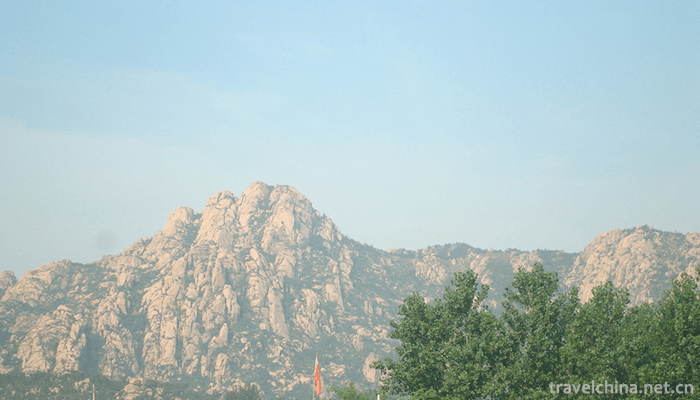
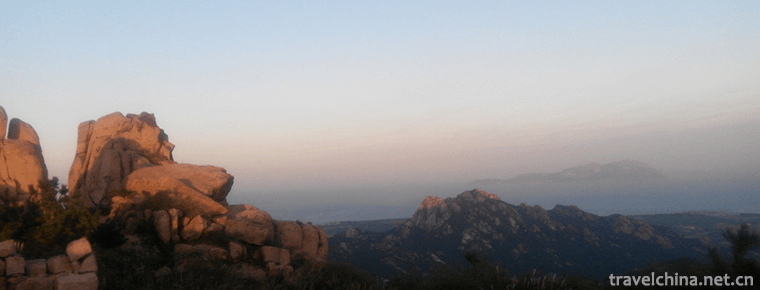
-
1.yangshuo west street
West Street is nicknamed Foreigner's Street, located in Yangshuo County,
Time 2018-10-12 -
2.Grand Buddha at Ling Shan
Lingshan Grand Buddha is a world famous scenic spot, located between the mountains and rivers of Mashan National Scenic Spot in Wuxi City, Jiangsu Province.
Time 2018-12-06 -
3.The AncientCity of Lang Zhong
Langzhong Ancient City is a national AAAAA-level tourist attraction, a thousand-year-old county, the hometown of Chinese Spring Festival culture, one of the four ancient cities in China.
Time 2018-12-12 -
4.Dongping Lake Scenic Spot
The total area of Dongping Lake Scenic Spot is 627 square kilometers, the annual water surface is 209 square kilometers, the average water depth is 2.5 meters, and the total water storage is 4 billion
Time 2018-12-20 -
5.Lianhua Rural Tourist Area
Lianhua Rural Tourist Area is a national AAAA-level tourist area, located in the northeast of Chenghai District, Shantou City, with Dongli Town in the East and Tiepu Town in Chaozhou City in the west
Time 2019-01-29 -
6.Construction Techniques of Wood Construction of Dong Nationality
Dong's wood construction and construction skills, the traditional architectural skills of Sanjiang Dong Autonomous County, Guangxi Zhuang Autonomous Region, one of the national intangible cultural her
Time 2019-04-28 -
7.The Story of Duzhenwan
Duzhenwan stories cover myths and legends, life stories, ghosts, foxes, ghosts and other fields, including conspiracy, good and evil, kindness and hatred and other different types
Time 2019-04-28 -
8.Hequ folk songs
Hequ folk song is a kind of traditional folk music. Shanxi's human geographical environment has formed the "Xikou" mode of life and production in which local people return to Daqingshan and
Time 2019-05-03 -
9.Southern Drama
Nan Opera, also known as Nan Opera and Shi Nan Diao, commonly known as "Gaotai Opera" or "People's Congress Opera", is a local opera in Enshi Tujia and Miao Autonomous Prefecture o
Time 2019-06-07 -
10.Encouragement of Sangzhi Battle
Sangzhi Bai people's fighting drum is mainly distributed in seven Bai villages and towns, such as Mahekou, Maidiping, Furong Bridge, Hongjiaguan, Zoumaping, Linxi River and Liu Jiaping. In other half
Time 2019-07-25 -
11.Da Zang Temple
Located in the north of malkang County, dazang temple is about 500 kilometers away from Chengdu City and is located in the deep mountains above 3000 meters above sea level.
Time 2020-11-07 -
12.Dazhou Technology
In 2019, Dazhou has 66 national high-tech enterprises, and the main business income of high-tech industry is 34 billion yuan. There are 1 national level maker space and 1 star innovation space, 6 provincial science and technology enterprise incubators
Time 2020-12-20